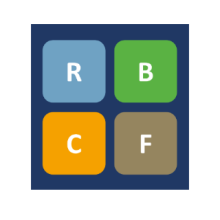

Results-Based Financing for Climate
Authors
Tags
- Clean energy-knowledge resources (1)
- Urban transportation-project examples (1)
- Energy access-project examples (9)
- Clean energy-project examples (9)
- Energy efficiency-project examples (5)
- Deforestation & forest degradation-knowledge resources (1)
- Urban transportation-knowledge resources (1)
- Deforestation & forest degradation-project examples (3)
- Water-project examples (3)
- Solid waste management-project examples (6)
- Energy access-knowledge resources (1)
- Climate resilience-knowledge resources (3)
- Climate resilience-project examples (3)
- Energy efficiency-knowledge resources (1)

Blog » R4 Rural Resilience Initiative (R4)
R4 Rural Resilience Initiative (R4)
The R4 Rural Resilience Initiative (R4)[1] aims to increase climate resilience, enhance food security and increase financial inclusion for rural communities in developing countries. The activities are built on the success of Horn of Africa Risk Transfer for Adaptation (HARITA) (2009-2011) in Ethiopia and from 2011 onwards, the activities are expanded within Ethiopia and other African countries as part of the R4 Rural Resilience Initiative led by Oxfam America and WFP.[2]
Program Design: The program is structured as follows. In the first year of enrolment, the farmers can pay 100% of the insurance premium in labor. Starting from the second year, depending on how many years they have been in the program, the farmers are required to pay 10% or 15% in cash and the rest of the premium in labor (the amount of money corresponding to the amount of labor value will be paid by the implementers to the insurance companies). Farmers work in risk reduction projects, e.g. soil and water conservation structures as well as tree planting to increase resilience in the local community. Support instruments offered by the initiative mainly cover funding that helps farmers to have access to agricultural insurance and financial literacy trainings. The poorest farmers (which is signaled by joining the governmental Productive Safety Net Programme (PSNP) in the region) cover 100% of the insurance premium frequently by 100% in labor or a growing percentage of premiums (in cash in case they’re returning participants) to obtain weather-indexed insurance for their crops.
RBCF Design & DLIs: In this initiative, the RBCF components occur on the following levels. On the “macro” level, instead of giving out money for resilience directly, the funders set up a system to allow the locals to work for risk reduction activities. The funding transferred to the insurance companies depends largely on the number of farmers enrolled and the labor they have provided in the risk reduction projects. In addition, the implementing partners are paid against verified deliverables. The projects are monitored though dashboards for outputs (e.g. completion status of the assets) and outcomes. The implementing partners are in charge of monitoring and verification of the quality of work. They face financial consequences for non-performances. On the “micro” level, the poorest farmers receive coupons after delivering verified amount of labor.
For Farmers: One day of work is valued at x dollars (depending on the countries). Information from a receipt example shows that the farmer is assigned a type of work, he/she worked 21 days, cost/day is 12 (detailed work content and currency is unknown as it is written in the local language), with a total value of 252.[1] Farmers work a number of days enough to cover for the insurance premium.